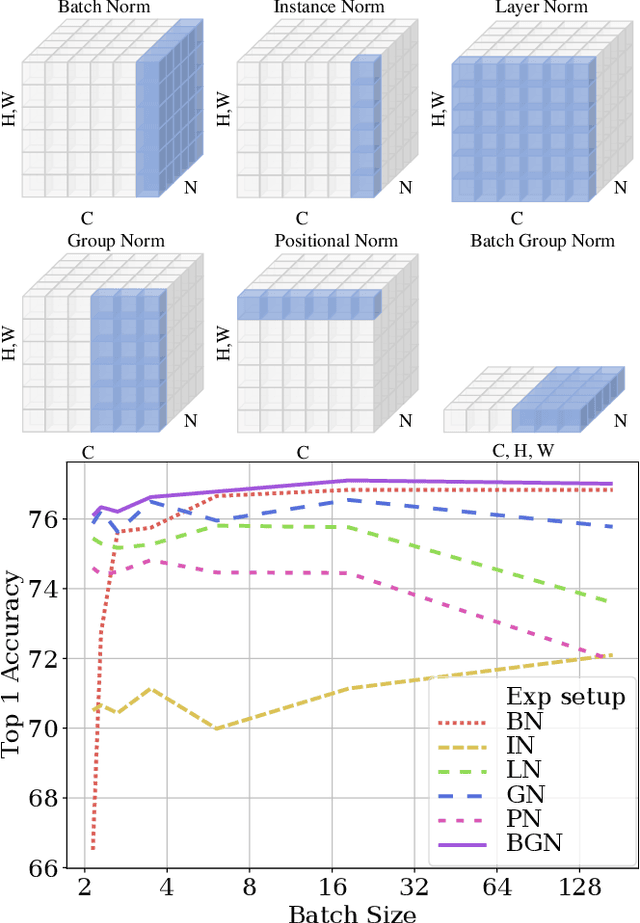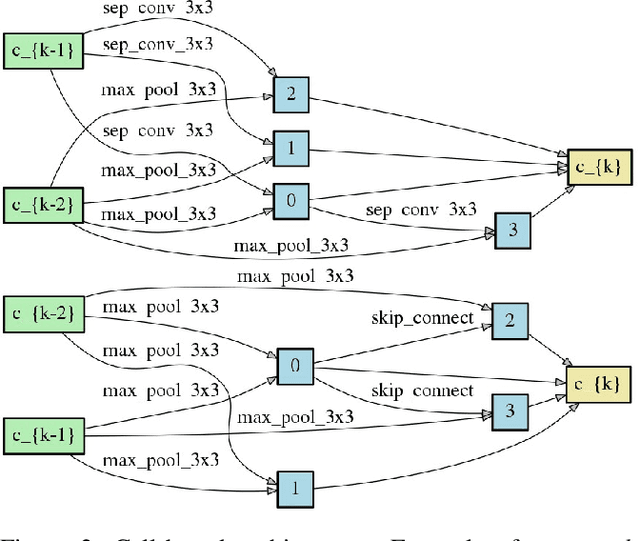Pedro Esperanca
Batch Group Normalization
Dec 09, 2020



Abstract:Deep Convolutional Neural Networks (DCNNs) are hard and time-consuming to train. Normalization is one of the effective solutions. Among previous normalization methods, Batch Normalization (BN) performs well at medium and large batch sizes and is with good generalizability to multiple vision tasks, while its performance degrades significantly at small batch sizes. In this paper, we find that BN saturates at extreme large batch sizes, i.e., 128 images per worker, i.e., GPU, as well and propose that the degradation/saturation of BN at small/extreme large batch sizes is caused by noisy/confused statistic calculation. Hence without adding new trainable parameters, using multiple-layer or multi-iteration information, or introducing extra computation, Batch Group Normalization (BGN) is proposed to solve the noisy/confused statistic calculation of BN at small/extreme large batch sizes with introducing the channel, height and width dimension to compensate. The group technique in Group Normalization (GN) is used and a hyper-parameter G is used to control the number of feature instances used for statistic calculation, hence to offer neither noisy nor confused statistic for different batch sizes. We empirically demonstrate that BGN consistently outperforms BN, Instance Normalization (IN), Layer Normalization (LN), GN, and Positional Normalization (PN), across a wide spectrum of vision tasks, including image classification, Neural Architecture Search (NAS), adversarial learning, Few Shot Learning (FSL) and Unsupervised Domain Adaptation (UDA), indicating its good performance, robust stability to batch size and wide generalizability. For example, for training ResNet-50 on ImageNet with a batch size of 2, BN achieves Top1 accuracy of 66.512% while BGN achieves 76.096% with notable improvement.
Neural Architecture Generator Optimization
Apr 03, 2020



Abstract:Neural Architecture Search (NAS) was first proposed to achieve state-of-the-art performance through the discovery of new architecture patterns, without human intervention. An over-reliance on expert knowledge in the search space design has however led to increased performance (local optima) without significant architectural breakthroughs, thus preventing truly novel solutions from being reached. In this work we propose 1) to cast NAS as a problem of finding the optimal network generator and 2) a new, hierarchical and graph-based search space capable of representing an extremely large variety of network types, yet only requiring few continuous hyper-parameters. This greatly reduces the dimensionality of the problem, enabling the effective use of Bayesian Optimisation as a search strategy. At the same time, we expand the range of valid architectures, motivating a multi-objective learning approach. We demonstrate the effectiveness of our strategy on six benchmark datasets and show that our search space generates extremely lightweight yet highly competitive models illustrating the benefits of a NAS approach that optimises over network generator selection.
 Add to Chrome
Add to Chrome Add to Firefox
Add to Firefox Add to Edge
Add to Edge